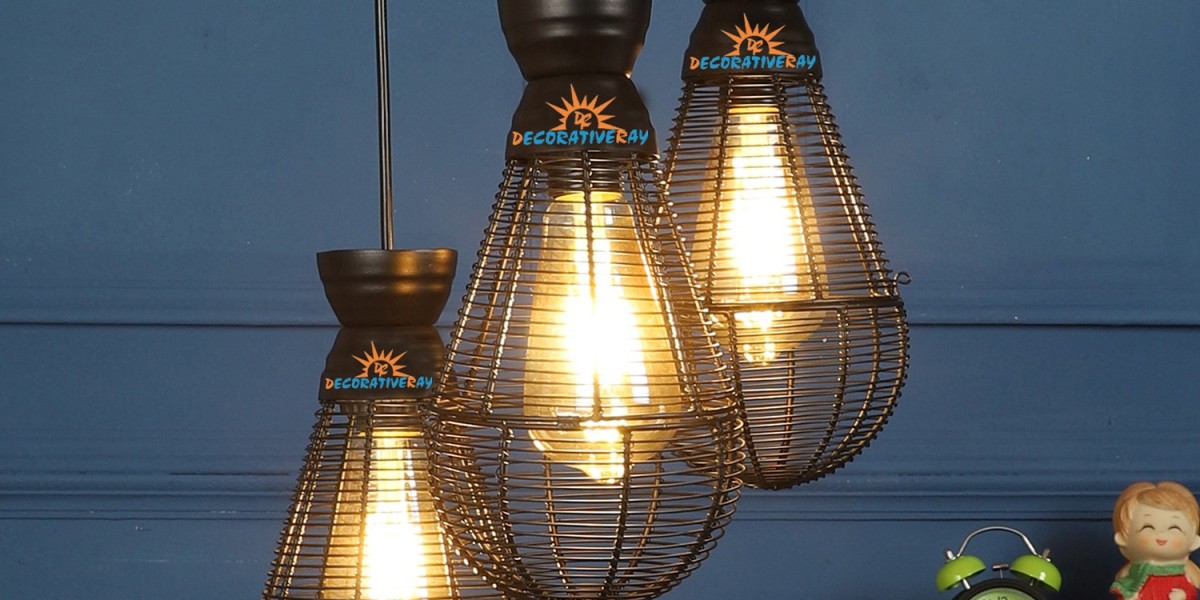Lighting is an essential element in interior design, playing a crucial role in setting the mood, enhancing functionality, and elevating the overall aesthetic of a space. Two popular lighting options—ceiling lights and wall lights—offer distinct benefits and suit different purposes. Understanding when to choose each can help you create a harmonious and practical lighting scheme for your home.
Ceiling Lights: Ideal for General Illumination
Ceiling lights are the go-to choice for general or ambient lighting. They are typically installed on the ceiling and provide widespread illumination, making them suitable for larger areas. Here are some scenarios where ceiling lights excel:
Living Rooms and Dining Areas Chandeliers, pendant lights, or recessed lighting can brighten up these spaces while serving as statement pieces.
Kitchens Overhead lights, such as flush mounts or track lighting, ensure sufficient illumination for cooking and other tasks.
Bedrooms Ceiling lights, paired with dimmers, offer customizable brightness levels for relaxation or activities like reading.
Workspaces and Offices Bright ceiling lights like LED panels provide even lighting that reduces eye strain during work.
Advantages of Ceiling Lights
Comprehensive Coverage: They illuminate entire rooms effectively.
Versatility: Available in various designs to match any decor style.
Space Efficiency: They don’t occupy floor or wall space.
Wall Lights: Perfect for Accent and Task Lighting
Wall lights are mounted on walls and are ideal for accentuating specific areas or providing focused lighting. They work best in:
Hallways and Staircases Wall sconces add both safety and aesthetic appeal by lighting up these transitional spaces.
Bedrooms Install wall-mounted reading lights near the bed for focused task lighting.
Bathrooms Vanity lights on the sides of mirrors provide even lighting for grooming tasks.
Living Rooms Wall lights can highlight artwork, architectural details, or create cozy corners.
Advantages of Wall Lights
Decorative Appeal: They enhance the room’s ambiance with stylish designs.
Focused Illumination: Perfect for highlighting specific areas or objects.
Energy Efficiency: Wall lights typically use less power than ceiling lights.
Choosing the Right Light for Your Space
When deciding between ceiling lights and wall lights, consider the following factors:
Purpose
Opt for ceiling lights for general illumination.
Choose wall lights for accent or task lighting.
Room Size and Layout
Large rooms benefit from ceiling lights for even coverage.
Smaller or uniquely shaped spaces may be enhanced by the targeted lighting of wall fixtures.
Style and Mood
For a dramatic effect, combine both types of lighting.
Match the fixtures to your room’s design theme for cohesion.
Energy Efficiency
Consider LED options for both ceiling and wall lights to reduce energy consumption.
Combining Ceiling and Wall Lights
For a well-rounded lighting scheme, incorporate both ceiling and wall lights. For instance, use a chandelier for ambient lighting in the living room, complemented by wall sconces to create a layered effect. Similarly, in the bedroom, pair overhead lights with wall-mounted reading lamps for versatility.
Conclusion
Both ceiling and wall lights serve unique purposes, and choosing the right one depends on your specific needs and design goals. By thoughtfully combining these lighting solutions, you can create a functional and visually appealing environment that enhances the overall ambiance of your space.









